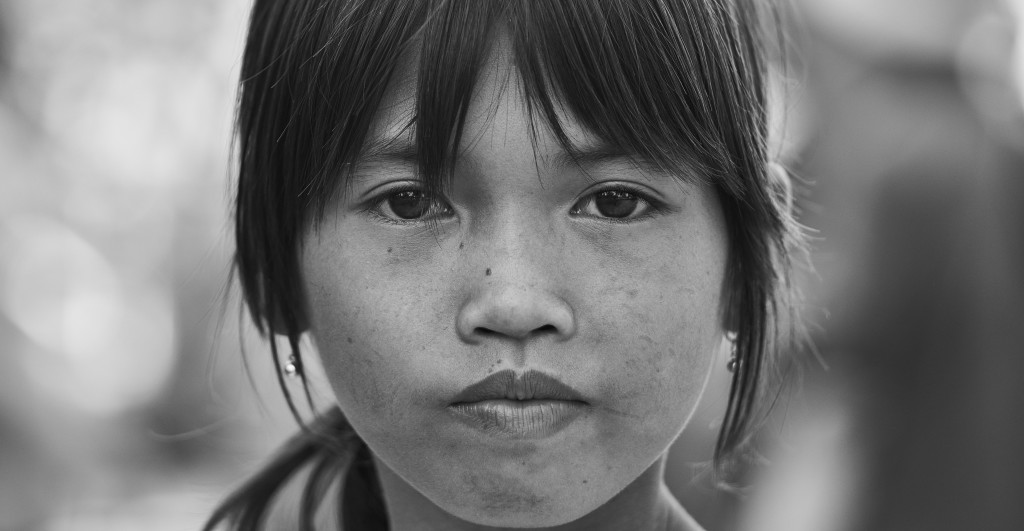This blog post is a part of the series, “CARED Perspectives,” developed by the APAGS Committee for the Advancement of Racial and Ethnic Diversity. Posts in this series will discuss current events and how these events relate to graduate students in psychology. If you are interested in contributing to the CARED Perspectives series, please contact Lincoln Hill.
Immigration at the Border: Separation of Children from Parents
By Jhodi-Ann Bowie
 In recent weeks, the global community has been flooded with images and information related to the U.S. immigration policy that requires the separation of children from their parents/caregivers at the border. This issue has undoubtedly impacted not only those directly affected, but millions of others who are disheartened by these events. As racial/ethnic minority graduate students, we are also not immune to the personal and professional effects of these events. Many of us have experienced a variety of emotions associated with the stories of children being separated from their caregivers. These experiences most certainly impact our ability to go about our daily lives, but they can also impact our professional work.
In recent weeks, the global community has been flooded with images and information related to the U.S. immigration policy that requires the separation of children from their parents/caregivers at the border. This issue has undoubtedly impacted not only those directly affected, but millions of others who are disheartened by these events. As racial/ethnic minority graduate students, we are also not immune to the personal and professional effects of these events. Many of us have experienced a variety of emotions associated with the stories of children being separated from their caregivers. These experiences most certainly impact our ability to go about our daily lives, but they can also impact our professional work.
Many of us conduct research on the effects of immigration on psychological well-being. Immigrants not only experience distress related to the hardship of being displaced from their homes, but they also experience a variety of challenges in their quest for asylum, and discrimination on many fronts while living in the US. These, and other challenges, have the potential to cause lasting mental health concerns. We can therefore anticipate that the impact of separating family members from one another is even more detrimental, particularly putting children at risk for psychological trauma.
Further, many of us work directly with these clients in our clinical practice settings. This and other issues related to social injustice particularly hit home and have a significant impact on psychology trainees, since we are often privy to our clients stories of their hardships in these experiences. Further, although many clients may not be directly impacted by these events, they may experience feelings of outrage and distress. Additionally, some of us may even identify as first, second, or third generation immigrants to the US and have personal and direct experiences with this issue.
The importance of these events inevitably blur the lines of personal and professional and highlight important considerations and questions for graduate trainees: How do I manage my feelings about current distressing events? Do I share these feelings in the clinical/work and academic space? Do I share my personal beliefs and feelings with clients? How can I advocate for these individuals from a professional standpoint?
These questions may be difficult for us to answer on our own. The role of supervisors, advisors, and professors therefore becomes paramount. Unfortunately, very few academic programs offer a safe platform for students to share their feelings and address the aforementioned questions. Additionally, students may be hesitant to request such a space for fear of seeming too politically driven/biased or unprofessional. But how can we be expected to keep such issues such completely compartmentalized from who we are and what we stand for? This plight remains ongoing since in this new age of social political polarization and social injustice, psychology professionals and graduate students must learn to navigate our own boundaries and responsibilities to the field.
===
APAGS-CARED aims to provide students with a variety of platforms to discuss and benefit from resources related to this and other social justice issues. These resources include peer support groups, webinars for international students, twitter chats, disseminating information to academic programs, and other initiatives.
For more information on APAGS-CARED, as well as APA’s stance and actions related to the immigration policy, please visit the following resources:
- APA on Immigration
- APA Letter to the President on Separation of Families
- Physicians for Human Rights Separation Letter
We want to hear what you think! Please share your thoughts on this topic in the comments section below.
Other posts in the CARED PERSPECTIVES series:
- CARED Perspectives: Ensure that All Children Have a Seat at the Table When Discussing Gun Reform
- CARED Perspectives: Racism on our College Campuses: What can we do about it?

 Psychology graduate students face unique struggles compared to graduate students in other fields, as we are expected to be self-reflective, engage in self-care, and also examine our ability to work with others while making sure that we dedicate most of our time to work. The balance often becomes a very tricky process to negotiate. International students in graduate psychology programs experience additional barriers in comparison to their domestic counterparts, as they have to navigate local and national policies, immigration requirements, paperwork, and experiences of discrimination, on top of academic requirements. Further, it is not unusual for international students to feel isolated, especially in smaller programs where the international student community is scarce. In addition to cultural adjustment and a possible language barrier, international students also have to plan a timeline carefully to ensure they are up to date on immigration documentation. One of the most stressful experiences for international students in clinical, counseling, and school psychology programs is applying for the clinical internship. International students face unique challenges in this process, including a reduced number of sites that accept individuals without US citizenship or permanent residency.
Psychology graduate students face unique struggles compared to graduate students in other fields, as we are expected to be self-reflective, engage in self-care, and also examine our ability to work with others while making sure that we dedicate most of our time to work. The balance often becomes a very tricky process to negotiate. International students in graduate psychology programs experience additional barriers in comparison to their domestic counterparts, as they have to navigate local and national policies, immigration requirements, paperwork, and experiences of discrimination, on top of academic requirements. Further, it is not unusual for international students to feel isolated, especially in smaller programs where the international student community is scarce. In addition to cultural adjustment and a possible language barrier, international students also have to plan a timeline carefully to ensure they are up to date on immigration documentation. One of the most stressful experiences for international students in clinical, counseling, and school psychology programs is applying for the clinical internship. International students face unique challenges in this process, including a reduced number of sites that accept individuals without US citizenship or permanent residency.

 APAGS Diversity Infographic
APAGS Diversity Infographic